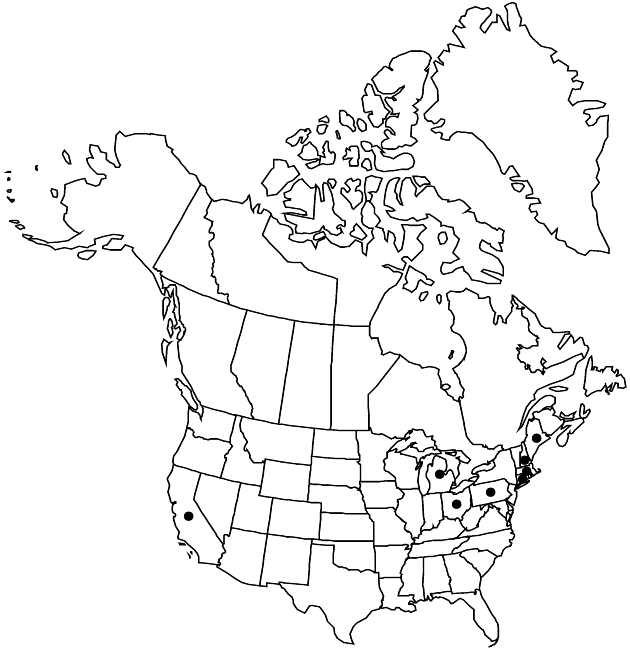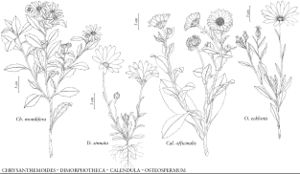Calendula officinalis
Sp. Pl. 2: 921. 1753.
IntroducedIllustrated
Treatment appears in FNA Volume 19. Treatment on page 382.
Leaf-blades 3–12 (–18+) cm × 10–30 (–60+) mm. Peduncles 5–8 (–12+) cm. Phyllaries 12–40+, (8–) 10–12+ mm. Ray-florets 30–50 (–100+); corolla laminae 12–20+ mm. Disc-florets (30–) 60–150+; corollas (4–) 5–6+ mm. Cypselae 9–15 (–25+) mm. 2n = 14, 32.
Phenology: Flowering year-round.
Habitat: Disturbed places
Elevation: 0–500 m
Distribution

Introduced; Calif., Conn., Maine, Mass., Mich., N.H., Ohio, Pa., Eurasia, Africa, Atlantic Islands
Discussion
Cultivars of Calendula officinalis are widely used horticulturally, medicinally, and as pot herbs.
Selected References
None.
Lower Taxa
None.
"broader" is not a number.
... more about "Calendula officinalis"
tuberculate +
ridged +
tailed +
introrse +
connate +
rounded;truncate +
scarious +
hirsute +
papillate +
penicillate +
continuous +
decurrent +
oblong;oblanceolate spatulate or linear +
winged +
tuberculate +
ridged +
discernible +
stigmatic +
absent +
coiled +
arcuate +
9mm;15mm +
staminate +
straight +
distinct +
proximal +
1;5 +
bisexual +
dispersed +
singly +
indeterminate +
heterogamous +
Present +
true +
surrounding +
campanulate;hemispheric +
10mm;30mm +
cauline +
deltate +
2-carpellate +
inferior +
attached +
anatropous +
absent +
tough +
thick +
connate +
persistent +
distinct +
herbaceous +
equal +
Sp. Pl. +
1753 +
pistillate +
fertile +
epaleate +
flat;conic +
fibrous +
exalbuminous +
modifed +
1;3 +
alternate +
procumbent +
erect +
2-branched +
papillate +
Calendula officinalis +
Calendula +
species +
campanulate +
shorter +
